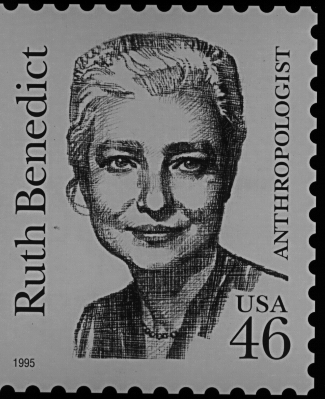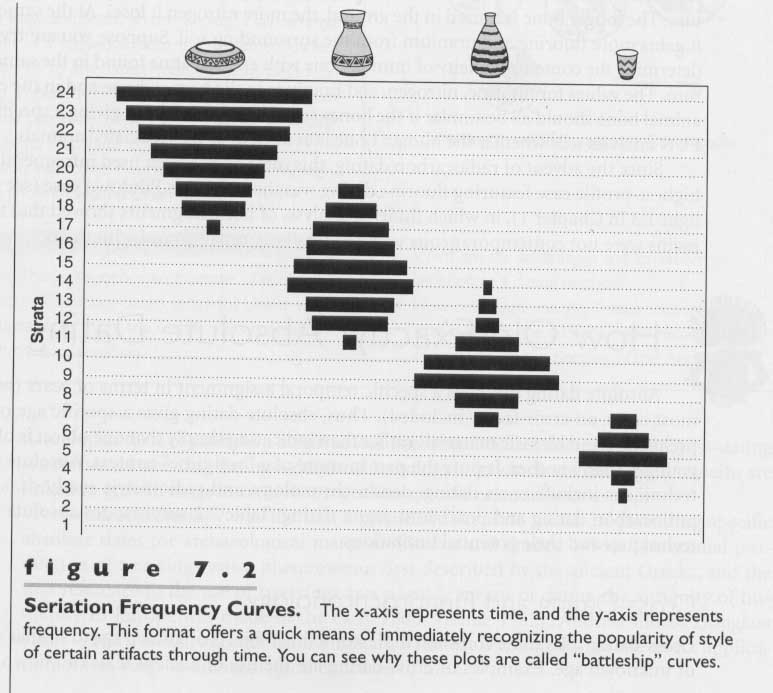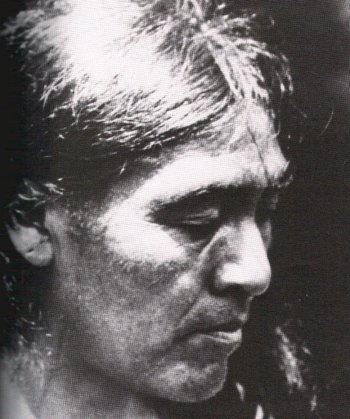
Lecture 2B) How Cultures Work: American Anthropologists
There are many ways to look at culture. Many theories, both past and modern, purport to know how cultures work, develop, and change. Many theorists argue about whether human behavior is due to nature or nurture. What about culture is influenced by the environment, and what is random human creativity? Is the individual an independent decision maker or just a slave to their upbringing.? In this next lecture several perspectives will be offered. It is up to you to decide which approach, as an anthropologist, you will apply to the study of cultures and belief systems.

Ruth Benedict and Enculturation:
Ruth Benedict, a student of Franz Boas, believed that children are born TABULA RASA, a clean slate. The culture into which they are born heavily influences theirs beliefs, behaviors, and disposition. She referred to this enculturation as EMOTIONAL PATTERNING. (Hatch 1973)
She even went as far to as to say that there existed cultural personality, a type of personality associated with the people of each culture. This, of course, was a limited view. We realize today that peoples' personalities, like biological variation, vary too greatly within one group to assign a standard behavior for all the people of that culture.
Instead there seems to exist an ideal culture within every real culture. IDEAL CULTURE is the standards by which individuals within a culture compare themselves. REAL CULTURE is how everyone in the culture actually behaves. The 'ideal' behavior for a culture like the Yanomamo is to always be generous. In reality individuals within the culture will vary greatly around the ideal. Some will be overly generous and will cause resentment or stress among members of the village, for every generousity must be repaid in kind. Many will not be generous enough, always leaving others to feel shorted in their reciprical exchanges. Anthropologists today have this broader, more complex understanding of cultural behavior.
Alfred Kroeber and Secondary Culture:
Another student of Boas' was Alfred Kroeber. Kroeber divided culture into BASIC and SECONDARY elements. Basic culture refers to those aspects of culture that deal with survival. How a culture procures food, shelter, water, and other necessities is a part of basic culture. Secondary aspects of culture included anything not necessary for survival. Music, art, dance, religion are all included in Kroeber's secondary culture. For example, a spear used for hunting would be a technology used for survival and therefore a part of basic culture. The carving of a totem animal or spirit guide onto the handle of the spear would be considered by Kroeber to be secondary culture.
Kroeber was much more fascinated with secondary culture, than basic culture. He did studies on the phenomenon of how ideas and fashions come in and out of style. He noticed that a fashion will appear and be popular to just a few individuals. It will then gain momentum and reach it's florescence of popularity. Afterwards it will wane in popularity to be replaced by another fashion. When you graph this phenomenon, with time on one axis and frequency of use (ie popularity) on the other, it appears in the shape of a battleship. The fore and aft of the ship represent the fashion waxing and waning in popularity. The middle, or widest part of the ship, represents the time the fashion was most popular. These curves are referred to as BATTLESHIP CURVES and this principle is called SERIATION.
Kroeber demonstrated seriation by looking at the fluctuation in women's' fashions. In America women's fashions are constantly fluctuating in the hem length and neckline. Dresses swing back and forth through time with regards to how revealing they are. During the first sexual revolution, in the 1920's, dresses got shorter as they dramatically diverted from the Victorian Age of modestly. I had a relative who was in her early teens at that time. She could not wait to be old enough to wear those cute, short dresses. These dresses were even shorter than the mini skirts of the 1960's! Unfortunately for her, the times took another dramatic swing in the next few years and she spent her young adult life wearing dresses that covered her from ankle to chin.
In the 1960's skirts again shortened. Though not as short as those 1920's, women did have to buy pretty underwear for when they bent over to drink from the water fountain. Some underwear even had messages, like 'Hi There', printed on them!
We use the ideas of seriation and battleship curves in archaeology quite a bit. We can look at different sites in a culturally related region and determine the relative ages of the sites by organizing artifacts into battleship curves. In historic sites in California, for example, we often find square nails. Square nails were replaced by round nails at the turn of the century. If we find one site with all square nails, one site with mostly square nails and a few round nails, another site with almost all round nails, and a fourth site with only round nails, we know the chronological order of sites. As the round nails are introduced and gain popularity, through time we will find that there are more and more round nails at the sites. Eventually the square nails are completely replaced by the round ones.
Here is an archaeology seriation chart showing gradual changes in pottery styles (Sutton and Yohe II, 2003):

 |
For all his contributions Kroeber is most famous for his work with Ishi, the last surviving Yahi of the central valley California (just north of Sacremento). Many of Ishi's people were murdered during the Gold Rush era. By the early 1900's Ishi was the only Yahi left. In 1911 decided to leave his home behind and approached a nearby ranch. Once discovered, he was taken to jail. Kreober read about him in the paper and decided to bring him to UC Berkeley. Together Kroeber and Ishi recorded as much of Yahi culture as they could before Ishi died of TB just five years later in 1916.

Julian Steward and Cultural Ecology
A student of Kroeber's, Julian Steward, divided culture up the same way, but was more interested in basic culture. Steward felt that the environment was a heavy influence on cultural beliefs and behaviors. The idea that culture is intimately entangled with the environment is referred to as CULTURAL ECOLOGY.
Like Kroeber, Steward believed that cultures living in harsher environments would have to focus more on basic culture and would have less time to spend on secondary. Steward also demonstrated that cultures living in harsh environments tended to have smaller populations, no property ownership, and were egalitarian with regards to wealth, social status, and sexual equality
We do find this to be true to a certain degree. The cultures of the Northwest Coast lived in a very resource rich environment. There was enough abundance to support large, complex, chieftom level societies, without the use of agriculture. There is much in the way of elaborated artwork and dance in these cultures. Some individuals enjoyed a higher status than others.
Harsher environments do not produce societies that are completely devoid of secondary culture. But there is certainly less time and therefore less physical evidence of artwork, dance, etc. People living in difficult climates simply have to be a bit more pragmatic.
Although it may not seem like it when you are a starving student, we are definitively a wealthy, resource rich society. Think of all the secondary culture around you that goes beyond, and sometimes even flies in the face of, functionality. Cars and clothes do not merely transport us and keep us warm. They are elaborated to convey status, style, and image. Homes are decorated with rugs too precious to walk on. We buy couches so expensively upholstered that they must be covered in uncomfortable plastic to protect them from use. If we were living more marginally, it would not even occur to us to be so frivolous.
Women in particular are pressured to spend large amounts of time and money on their appearance. Sometimes they even grow and adorn their fingernails to the extent of not being able to use their hands. Phones, computers, and cash registers must be typed using a pencil.
Marvin Harris and Environmental Determinism:
Marvin Harris, a modern anthropologist, has taken cultural ecology to an extreme. For him the environment not only influences, but completely determines, culture. This is referred to as ENVIRONMENTAL DETERMINISM. He has even gone as far to say that a single resource, protein, is solely responsible for determining everything from subsistence to religion.
He wrote a couple of controversial books many years ago that were very popular. One was called, 'Cows, Pigs, Witches, and Wars' the other, 'Cannibals and Kings'. In them he talked about the taboo of eating pork among Jews as being a result of the danger of trichinosis (a parasite found in pig meat) and the competition for protein in the desert. Because pigs are omnivores they will compete with humans for meat. Cows and chickens are much better protein converters because they eat things that we do not like to eat. He also explains the taboo of eating cow in India by pointing out that the cows are more valuable alive. Cattle provide much in the way of milk for protein and dung for fire fuel.
Marvin Harris has toned down his approach quite a bit, but you will still see his environmental perspective in much of what he publishes these days. In your text on the Yanomamo, Chagnon refutes Harris’ theory and how Harris applied it to the Yanomamo. In the chapter on ‘Cultural Ecology’, Chagnon discusses his data on protein intake and how Harris’ theory falls short of demonstrating that warfare is a result of protein deficiency among the Yanomamo. Be sure to read this chapter before the midterm!!
 |